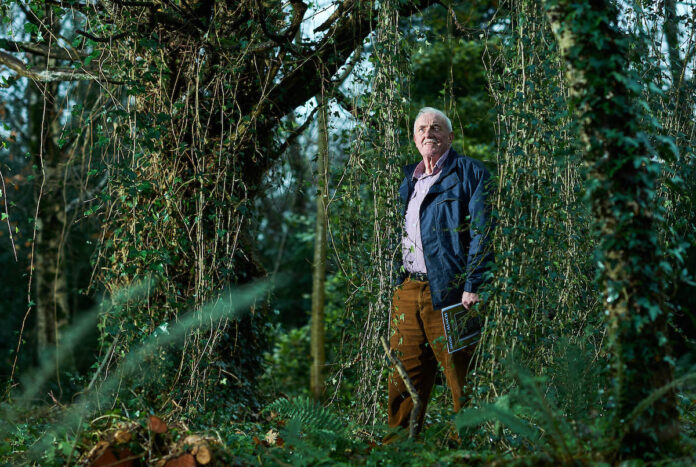THE importance of chronicling history, culture and folklore of the Sliabh Aughty region for future generations has been emphasised by an East Clare historian.
In an interview with The Clare Champion, Ger Madden stressed if local history is not recorded by his generation it will be lost as it is not being prioritised by schools.
East Clare Heritage will officially launch the 18th edition of the Sliabh Aughty Journal on Friday, September 23 in McNamara’s Bar, Scariff at 9pm.
Well known genealogist Dr Paddy Waldron will launch the journal, which contains a series of well researched articles on history and folklore from East Clare and South Galway.
It was compiled by Ger Madden and Denis Moloney from Bodyke. Mr Madden recalled when East Clare Heritage published their first journal in 1989 people thought it would end after five or six editions.
However, 33 years later there is still plenty of material to produce two or three journals annually.
“The Sliabh Aughty region stretches from Tulla to Whitegate out to Loughrea back into Woodford. Nothing has been written about some of the townlands in this region. No tourists visit these places. It is completely undiscovered. The views in some of these places are better than you would find in Killarney.
“The Sliabh Aughty hills are one of the least recognised part of Ireland. There is a Greenway between Killaloe and Tuamgraney, which provides a route for pedestrians on a walkway.
“But a proper Greenway is a greenway through the mountains and hills in the Sliabh Aughty. If roads in the Sliabh Aughty hills were widened a bit, there could be hundreds of cyclists and small buses on them.”
He said William Prentice of Prentice and Ormsby Solicitors has written an “amazing” article about the iron industry in East Clare and Woodford.
In 1713, the House of Lords heard a case involving an alleged breach of trust relating to an ironworks at Scariff and Woodford, which was the culmination of litigation that started some years earlier but had its roots back in the early sixties.
Mr Madden has written an extensive article about the Gleesons of Bodyke including Paddy Gleeson, who was born and went to school in Terryglass before he left and came to live in Bodyke in the late fifties.
Mr Gleeson, who is a lifelong Fianna Fáil supporter worked in the Chipboard Factory in Scariff for six years. In 1969, he married Emily Mellody and they took over her aunt’s shop in Church Street, Scariff, which is run by their son, Kieran.
The founder member of East Clare Heritage has helped and supported Raheen Hospital, Scariff Chamber of Commerce, the Integrated Rural Development Scheme, East Clare Tourism, Bodyke Water Group Scheme, Tulla and District Angling Group, and St Coelan’s Burial Ground Committee.
One of his proudest achievements was the creation of a memorial park at Callahy, Tuamgraney in memory of those who died during the famine.
On Sunday, July 20 1997, when the park was officially opened, it was envisaged people would walk the half mile route from the workhouse to the park led by Michéal Ó Ruairc from Tulla.
The journal states: “Not one for making speeches, Paddy felt compelled to state categorically what it was we were commemorating.
“Standing outside the remnants of the infamous workhouse, Paddy finished his talk by stating, ‘We are privileged that we have the choice of going whatever way we like. One hundred and fifty years ago, many thousands of people were taken from this building and didn’t have a choice’.”
Tom McDermott, a fisheries scientist, Marine Institute Galway, has written an article about a centenary of scientific investigations at the Limnological Laboratory at Portumna.
Martin A Timoney chronicled how Pádraig ó Bheacháin introduced him to East Clare archaeology in 1969 and 1970.
An overview of how violence linked to land, employment, and the price of food was a continuous feature of early nineteenth century life in rural Ireland was provided in the journal by Denis Moloney.
Paddy Madden wrote an interesting story of how five Hogans from the one family in Ballyglass, Whitegate fought in four wars in three different countries and two of them fought on different sides in the War of Independence.
One contributor, Christy Cunniffe, who wrote about Knockauncarragh – a little-known townland north of Woodford village summed up the importance of folklore when he stated:
“It is important that every townland in the Sliabh Aughty uplands requires an in-depth study and it is only once each townland is examined in detail that a comprehensive multidisciplinary history can be written of the region.”
Since their last publication in 2019, Mr Madden recalled that two of their founding members – Alan Sparling and William MacLysaght – who gave generously of their time and expertise over many years promoting the history, heritage and culture of the Sliabh Aughty region, have passed away.
East Clare correspondent, Dan Danaher is a journalism graduate of Rathmines and UL. He has won numerous awards for special investigations on health, justice, environment, and reports on news, agriculture, disability, mental health and community.


